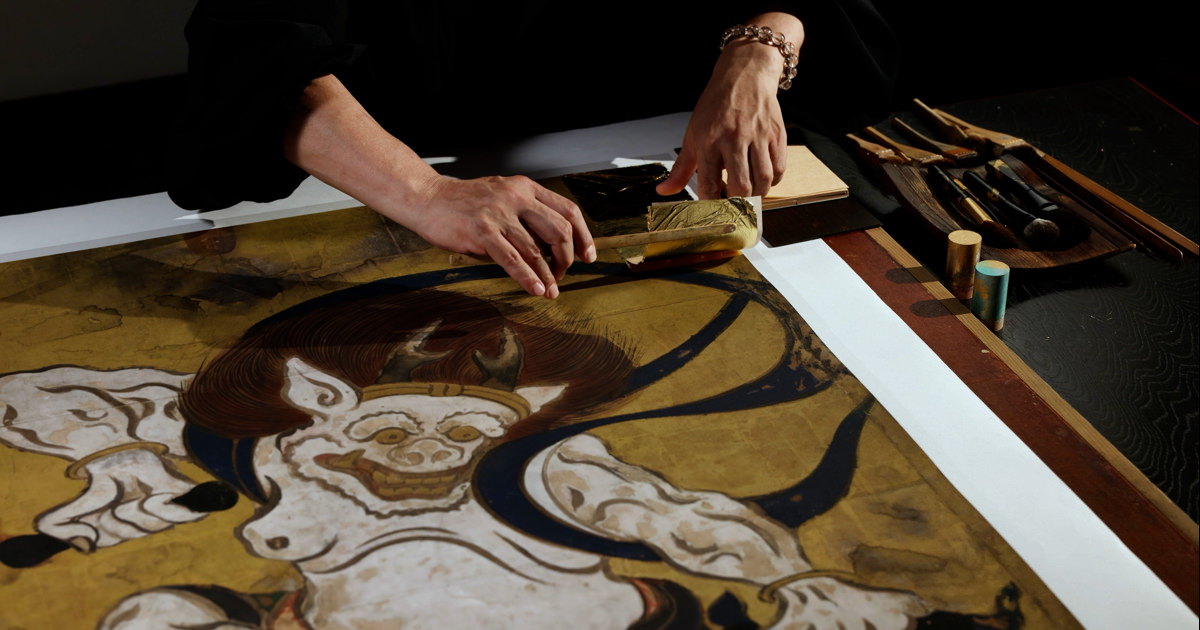Katsushika Hokusai / National Museum of Asian Art, Smithsonian Institution, Freer Collection, Purchase — Charles Lang Freer Endowment, F1954.119
These images are based on the high resolution facsimile produced by the Tsuzuri Project. Unauthorized copying, duplication, or transfer of these images is strictly prohibited.
Portrait of a Courtesan Walking
High-resolution facsimiles
- Material
- printed on silk
- Period of creation
- Tsuzuri Project Stage 12 2018–2019
- Recipient
- The Sumida Hokusai Museum(Sumida Ward)
Original
- Artist
- Katsushika Hokusai
- Historical era
- Edo (19th century)
- Material
- ink, color on silk
- Medium
- hanging scroll
- Size
- H110.4 × W41.8 cm
- Collection
- Smithsonian's National Museum of Asian Art
Description
This is a picture of an oiran (a geisha courtesan) dressed glamorously in a gorgeous kimono and hair ornaments, out walking in her district to go around making New Year greetings, while holding the hem of her kimono. In the Yoshiwara district of Edo (today's Tokyo), which was a red light district authorized by the Tokugawa Shogunate, there was a custom called shikise bi, where on the first and second days of the New Year each brothel presented a short-sleeved kimono to each of its courtesans according to their respective grades. Tradition has it that they would wear them and go around to tea houses and other facilities to give New Year greetings. The way they would walk on such days was called hachi monji (“figure of eight”). As the picture indicates, oiran courtesans would raise their wooden geta sandals high and step forward slowly as if to draw an arc by moving the tips of their feet around. From the signature “Zen Hokusai Taito” applied to it, we know that Hokusai produced this picture when he was in his fifties.



